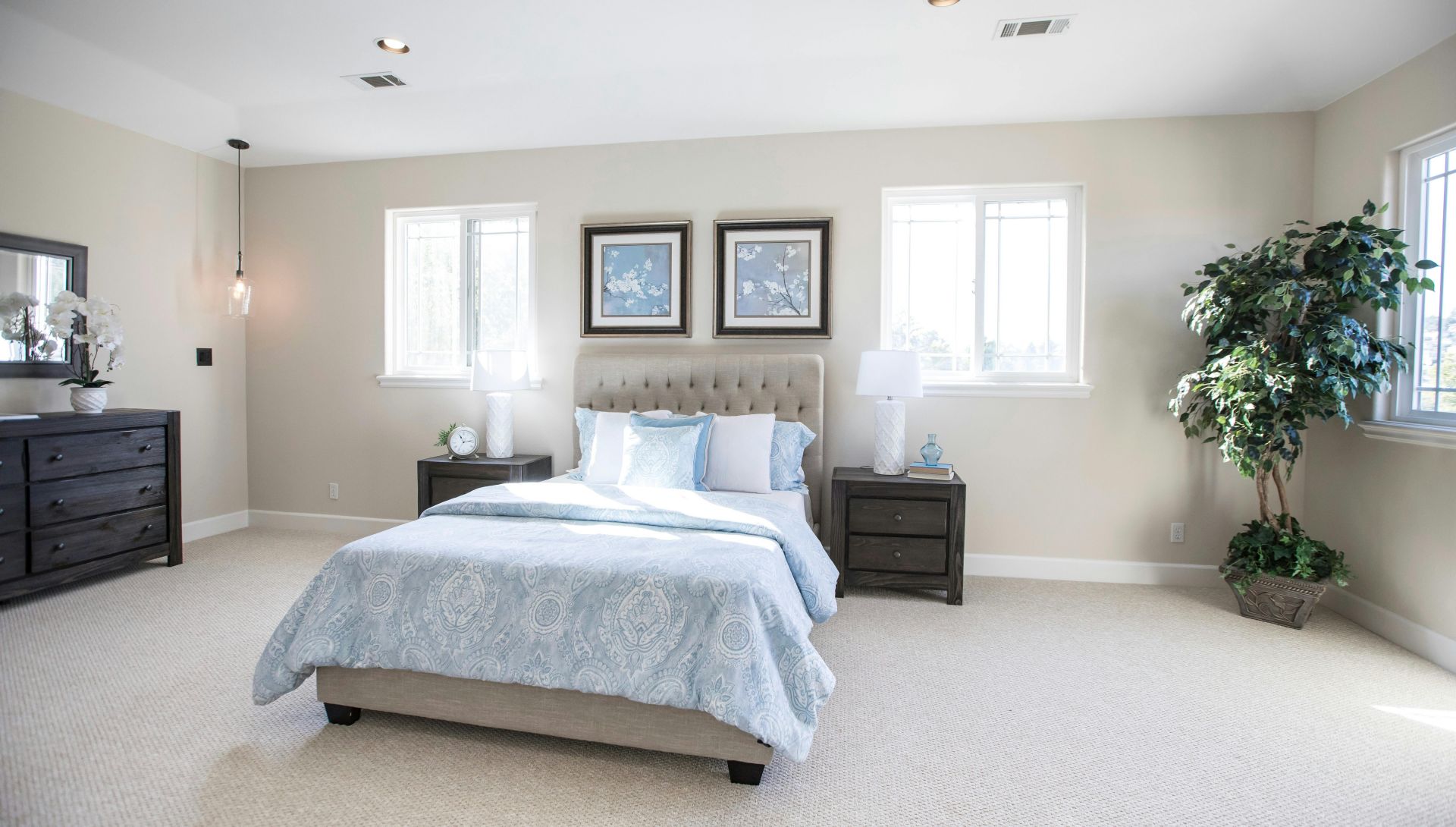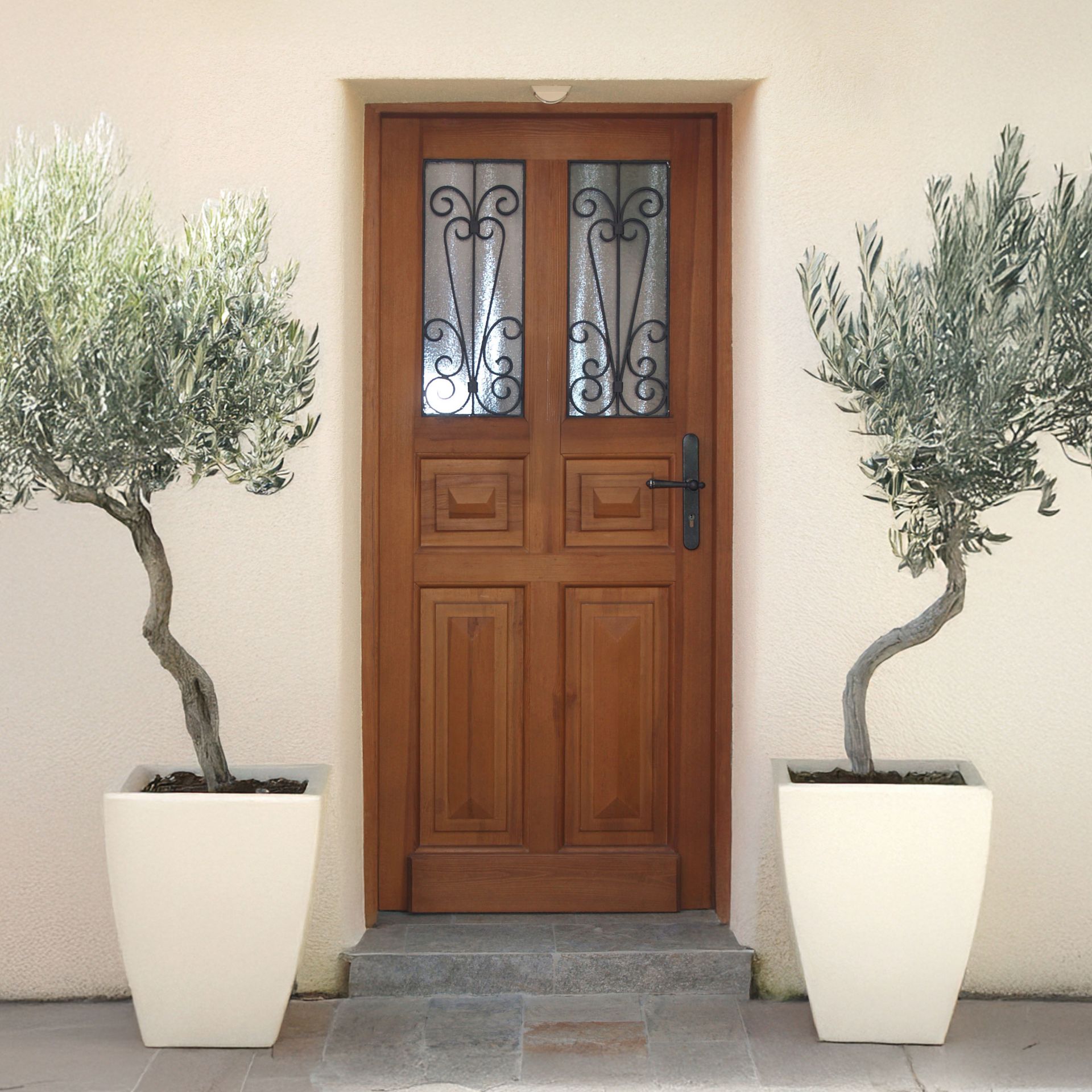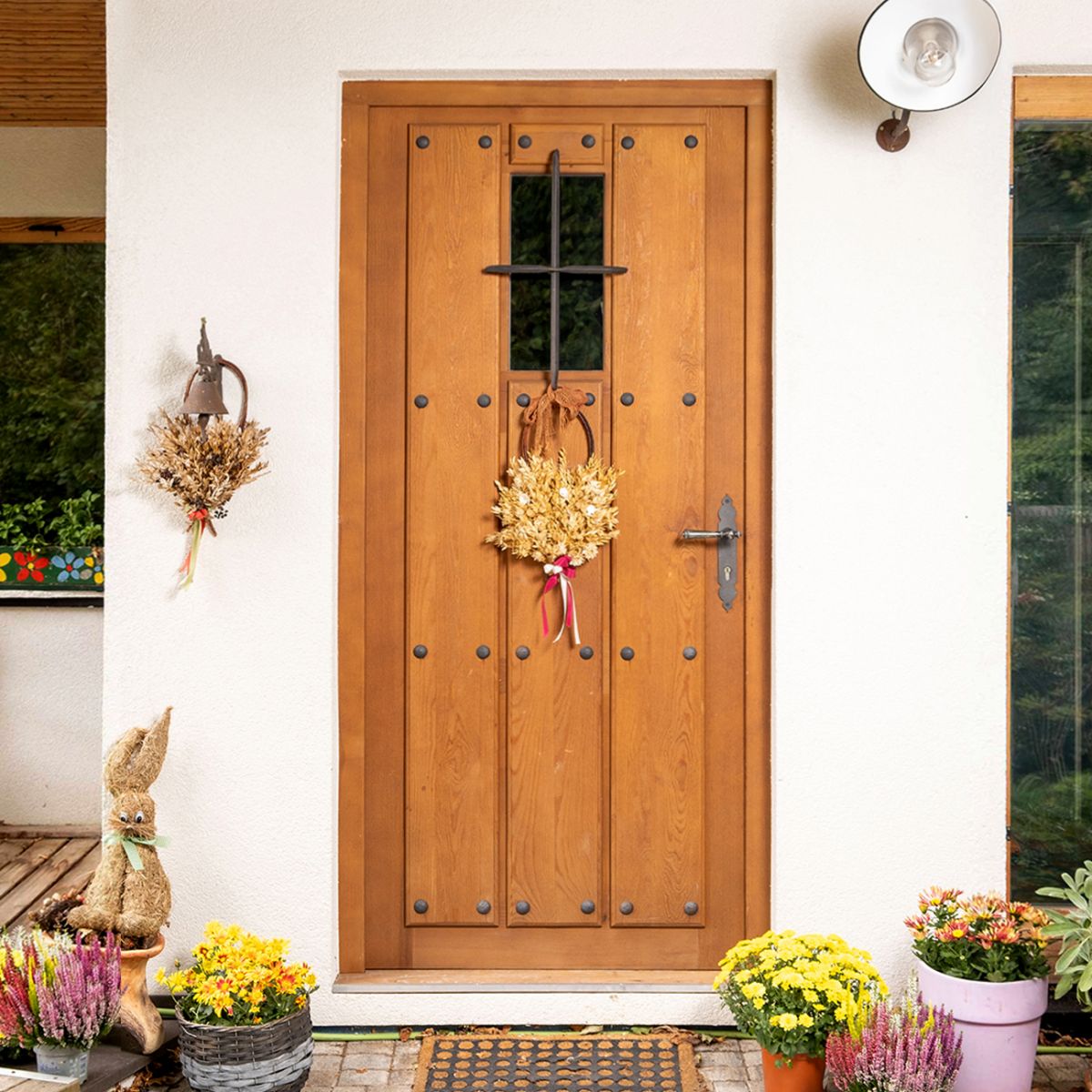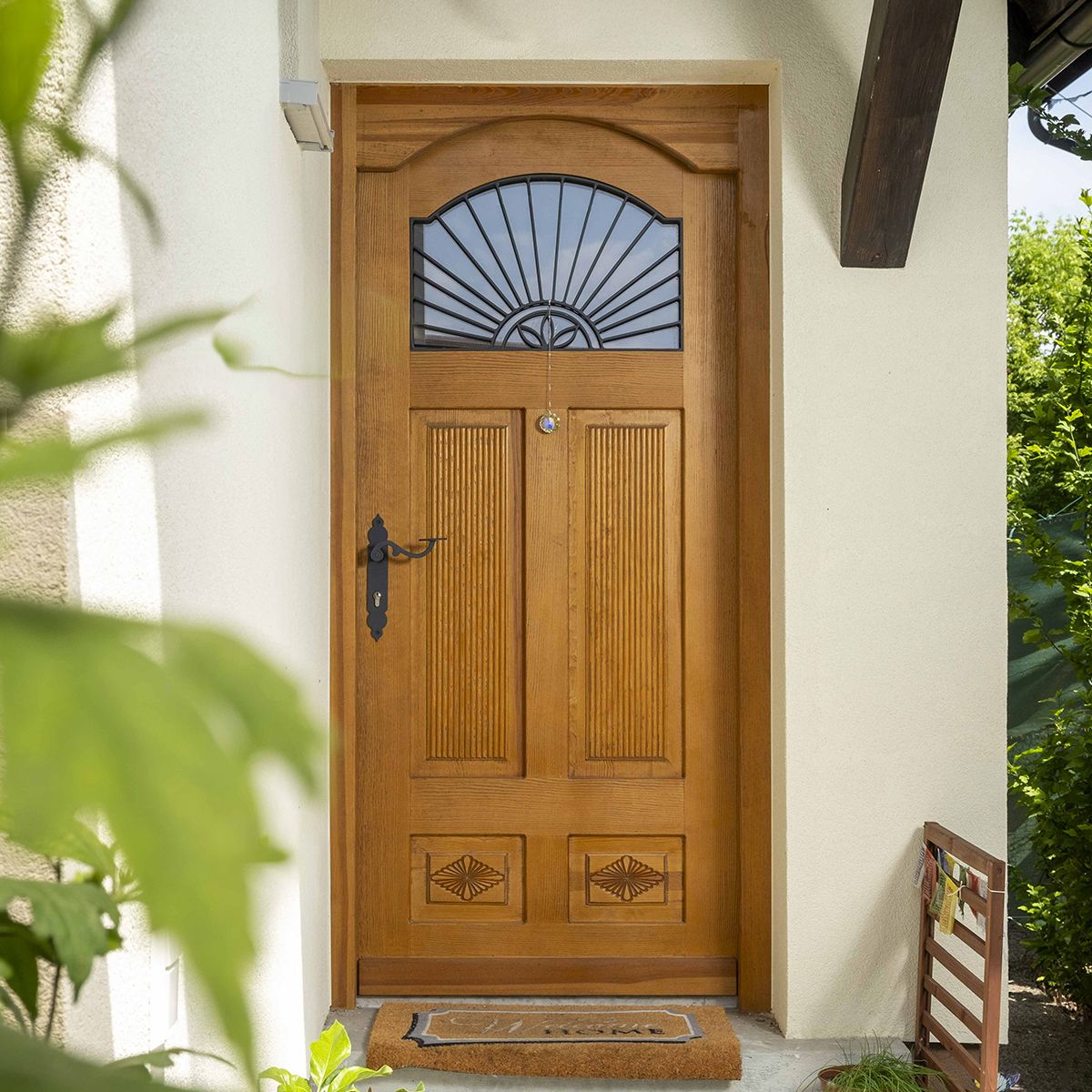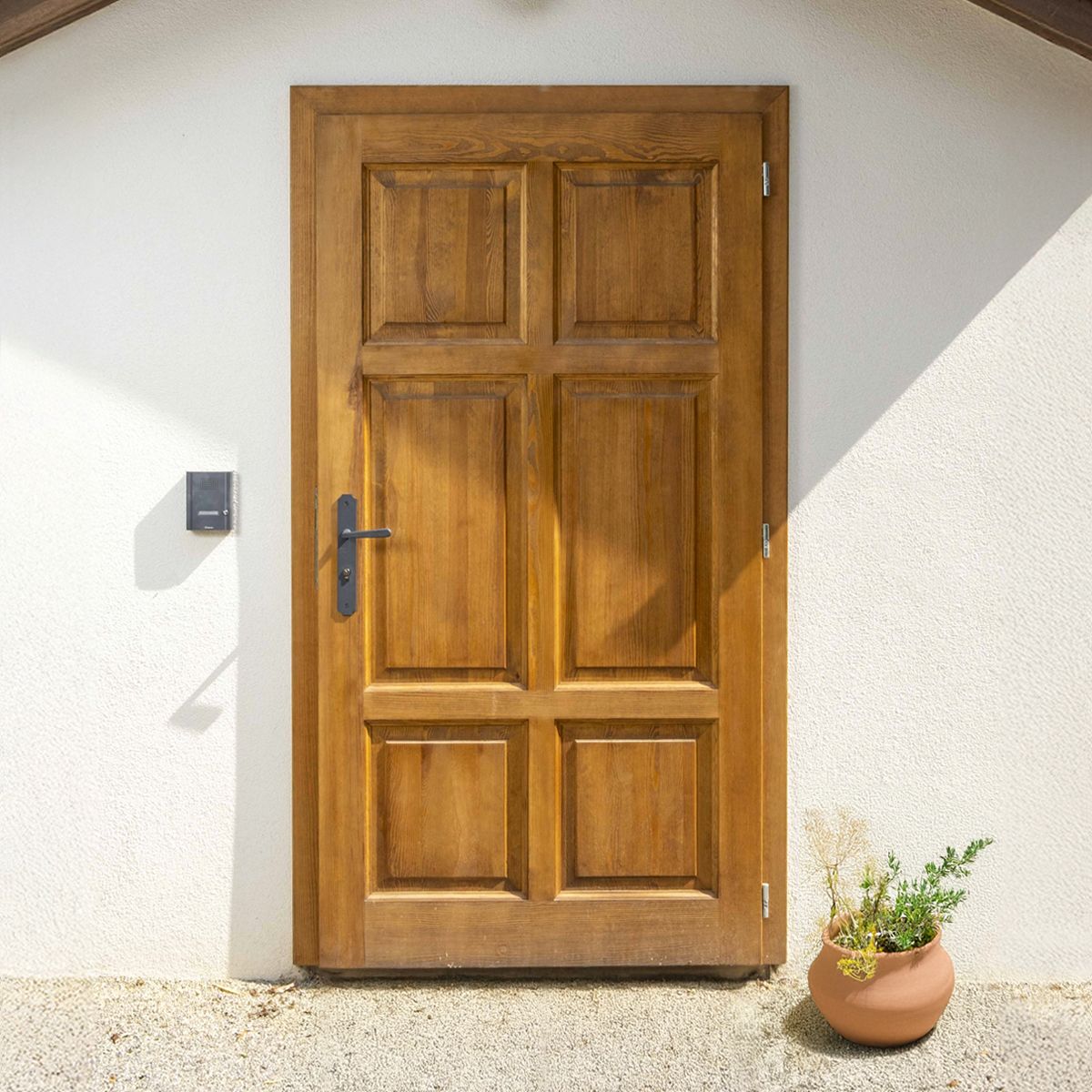Door Designs Across the Ages: From Romanesque Solidity to Modern Minimalism
24.9.2025
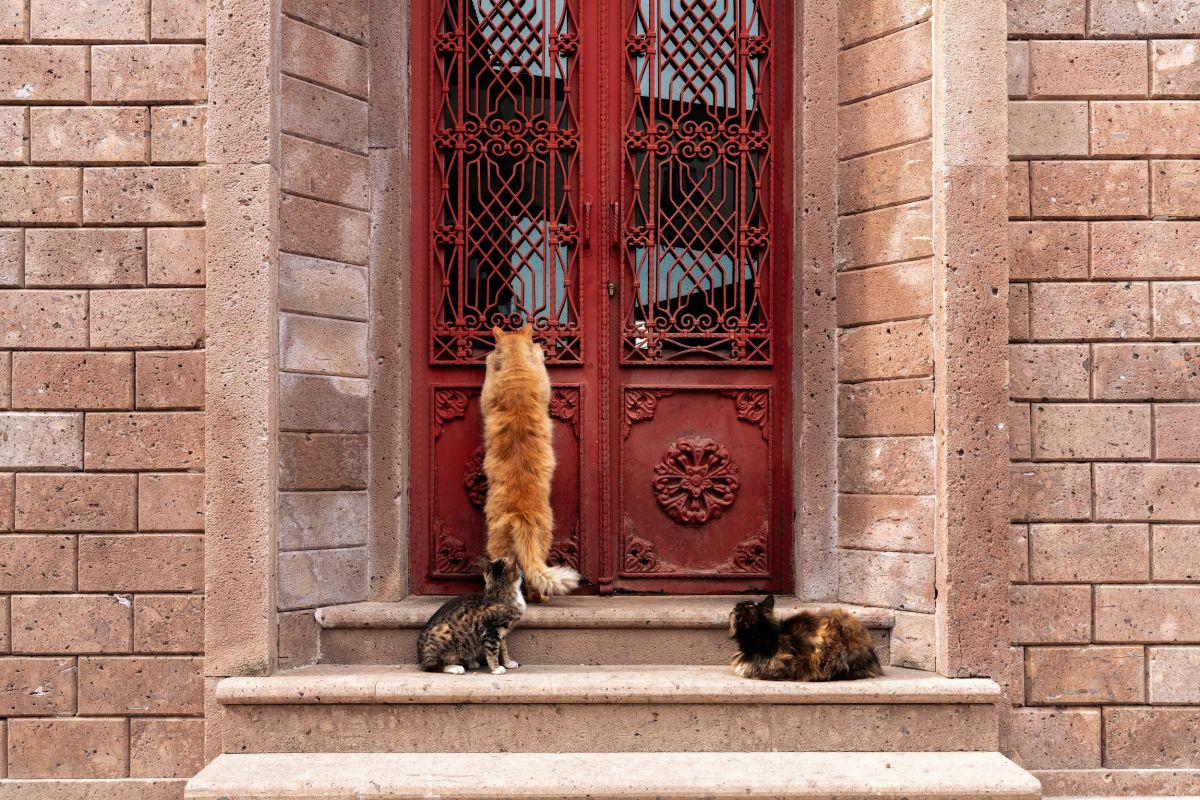
Doors do more than open and close — they encode the aesthetics, craftsmanship and technology of their time. From the heavy fortified doors of the Romanesque to the clean, tech-enabled entrances of today, every era shaped how doors looked and functioned. Below: a short epoch overview and the direct impact on doors.
Romanesque (c. 9th–12th centuries)
Overview: Romanesque architecture favors massiveness: thick walls, round arches and sturdy construction. Simplicity and solidity dominate.
Impact on door design & tech:
Robust wooden doors with heavy iron straps and large nails; emphasis on protection.
Rounded arch portals with carved stone surrounds; narrative reliefs sometimes in the tympanum.
Simple but strong joinery and ironwork — doors built for durability.
Gothic (c. 12th–15th centuries)
Overview: Gothic emphasizes verticality, pointed arches and elaborate tracery. Structures became lighter and more ornate.
Impact on door design & tech:
Taller, pointed-arch entrances; doors integrated into sculptural portal ensembles.
Richly carved door leaves, statuary columns and decorative ironwork.
Doors served grand ceremonial and symbolic functions (especially in churches and municipal buildings).
Renaissance (15th–16th centuries)
Overview: Revival of classical orders, symmetry, proportion and measured decoration.
Impact on door design & tech:
Classical frames: pilasters, entablatures and pediments around doors; precise moldings.
Paneled wooden doors with refined proportions; higher craftsmanship standards.
Doors as integral, ordered parts of the façade.
Baroque (17th–mid 18th centuries)
Overview: Baroque architecture is dramatic, theatrical and richly ornamented.
Impact on door design & tech:
Grand entrance doors with sculptural ornament, large double doors and bold pediments.
Elaborate hardware and decorative finishes — an expression of power and wealth.
Stone door frames often matched the theatrical façade design.
Rococo (mid 18th century)
Overview: Lighter, more playful than Baroque — asymmetrical curves, shells and floral motifs.
Impact on door design & tech:
Fine, ornate interior doors with curved panels and delicate carvings.
Exterior doors often more restrained than Baroque but interior doors highly decorative.
Integration with richly decorated interiors (stucco, painting).
Neoclassicism (late 18th–19th centuries)
Overview: Return to classical restraint: geometry, calm proportions and minimal ornament.
Impact on door design & tech:
Symmetrical, well-proportioned doors with classical surrounds (triangular pediments, pilasters).
Less ostentation than Baroque; materials and proportions emphasized.
Doors often used simple, high-quality metals for fittings.
Historicism (19th century)
Overview: Eclectic revival of historical styles — Neo-Gothic, Neo-Renaissance, Neo-Baroque — often combined with industrial production.
Impact on door design & tech:
Wide stylistic palette: Gothic tracery, Renaissance mouldings, Baroque ornament — sometimes mixed.
Industrial manufacturing enabled more ornate ironwork and patterned glass at scale.
Entrance doors included decorative glass (fanlights, transoms) and mass-produced decorative elements.
Modern (20th century – today)
Overview: From Bauhaus minimalism to contemporary high-tech design: emphasis on function, new materials (steel, aluminum, glass), insulation and security.
Impact on door design & tech:
Clean, flat surfaces; large wooden door slabs, steel and glazed combinations.
Modern hardware, thermal insulation, multi-point locking systems and electronic locks.
Revival trends: traditional wooden and country doors reproduced with modern performance.
Conclusion
The evolution of door designs reflects far more than architectural taste — it tells the story of protection, representation, craftsmanship and technology across the ages. From the massive security doors of the Romanesque, the soaring Gothic entrances, and the ornate Baroque and Rococo portals, to the rational clarity of Classicism, the eclectic revivals of Historicism, and the minimalist or high-tech aesthetics of the Modern era — every epoch left its mark on house doors, entrance doors, wooden doors and country doors.
Today, homeowners can draw inspiration from these historical styles while benefiting from modern innovations in insulation, security and smart technology — achieving the perfect balance between timeless beauty and contemporary function.
